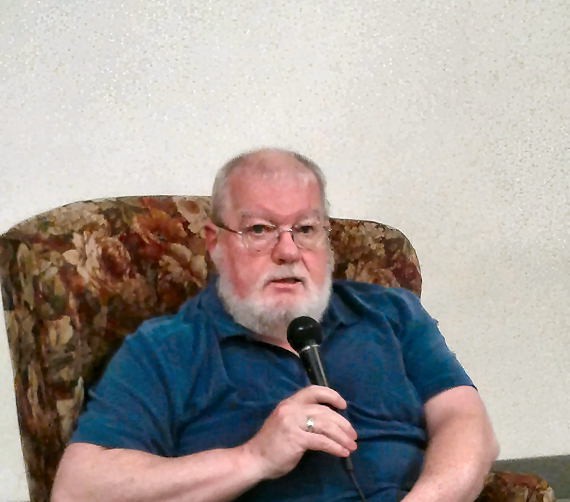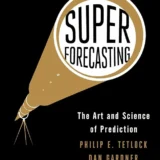
Well, April is here. March went out like a lamb—but I can’t remember if it came in like a different beastie or not. According to the lore, if we have typical Vancouver weather (rain) we can prepare for May flowers. Looking around on my walks, I have seen numerous March flowers, so I’m prepared to believe I’ll see more in this month and May. (The cherry trees are spectacular now, but all those pretty pink petals will be on the ground by May.) All of this growth probably won’t be occurring in the city of Vanderoy, on the Dying Earth invented by Jack Vance and further written about by Matthew Hughes (Figure 1). Matt obtained permission from Vance’s estate to continue writing in the Dying Earth saga of the Demon Princes; that resulted in a book called Barbarians of the Beyond. The book we’ll be talking about today is also set on the Dying Earth, called Baldemar.

For those of you not familiar with Matt’s writing, he’s pretty prolific guy, whose “magnum opus,” What The Wind Brings, I reviewed in December 2019. According to the back cover of Baldemar, Matt has “won the Endeavour and Arthur Ellis awards, and has been shortlisted for the Aurora, Nebula, Philip K. Dicks, Endeavour (twice), A.E. Van Vogt, Neffy, and Derringer Awards.” He has also been inducted into the Canadian Science Fiction and Fantasy Hall of Fame.
Previous to this book, his other Dying Earth stories, about the thief named Raffalon, have been collected in 9 Tales of Raffalon, in 2017. Both the Baldemar and Raffalon stories were previously published in various venues, like a couple of the late Gardner Dozois’s anthologies, and The Magazine of Fantasy and Science Fiction (F&SF), but the previous book was merely a collection. This volume has had the stories slightly revised and had interstitial material added to make them into more of a cohesive novel-length story (an endeavour that worked quite well, IMO).
In some ways, the Raffalon stories are a bit more Vancian, in that things don’t always go well for the aforementioned thief, who often finds himself holding the short end of the stick, and whose best-laid plans gang oft agley; Baldemar is a bit less optimistic and a bit more collected than Raffalon ever was, although the thief makes a brief yet significant appearance in Baldemar’s own book. It’s been many years since I’ve read any of Vance’s books—a failure I plan to remedy in less than geologic time; but in my opinion, Matt Hughes is well positioned to take the Dying Earth mantle from Vance’s shoulders and lay it across his own.
When Baldemar was ten, he was small for his age, and his mother decreed he should attend school. After some resistance, he acquiesced, and on his way there, he was accosted by some bullies, who bruised him some and took his half-penny lunch money. This continued until he conceived a plan to hire a strong-arm henchman for a local moneylender to put an end to the bullying (using the lunch money he already wasn’t getting any benefit from). An unlikely friendship grew between the small boy and the henchman; and by the time he was thirteen, Baldemar was running small errands for the henchman, named Vunt, and earning money rather than spending it. At sixteen, having left school, Baldemar (thanks to Vunt) had become a junior henchman himself to the wizard Thelerion, a not terribly highly placed adept of the Red School.
Over the next few years, Baldemar makes friends with a more highly-placed henchman named Oldo and, by keeping his eyes and ears open—and his wits about him—rises in Thelerion’s service. Although he never grew substantially as he aged, Baldemar was in prime shape physically, thanks to Vunt’s training in physical exercise; and he watched, and learned, and eventually served both his master well—though his ambition was to never rise farther than the rank of henchman, having seen the kinds of falls overweening ambition and greed can bring to people.
A number of adventures, mostly prompted by Thelerion’s ambition (most wizards are ambitious, though their ambitions are usually aimed at leaving the plane they are on and going in person to The Overworld (Paradise, Heaven, call it what you will). During those years, Baldemar finds himself aided by an object of power, called the Helm of Sagacity, which was actually a projection into the world of an extradimensional being of great power and complexity. A number of adventures happened, while Thelerion attempted to use Baldemar and his new “friend” the Helm to achieve Thelerion’s own desire (as stated above).
Eventually, Thelerion—as wizards often will—overreached himself and Baldemar was able to retire on his savings (and judicious pickings from the remains of Thelerion’s estate) to a fishing boat and cottage in a small village far from Vanderoy. But his story doesn’t end there.
This is far from a comprehensive recounting of Baldemar’s times and adventures; and I have by no means even begun to convey the wonderful Vancian tongue-in-cheek language that Matt uses when telling of Baldemar’s life and times. Even though I’d read most of the stories before as separate stories, I enjoyed this book from beginning to end. I think you will too—and I plan to get Barbarians of the Beyond as soon as I can.
CORRECTION! Matt Hughes emailed me to tell me that I was mistaken about Barbarians of the Beyond: “One minor correction: Barbarians of the Beyond is not set in the Dying Earth, but in Vance’s other main milieu, the space opera universe of the Gaean Reach.” Oops! Sorry, Matt (and readers, for misleading you).
Comments? Anyone? Bueller? You can comment here or on Facebook, or even by email (stevefah at hotmail dot com). All comments are welcome! (Just be polite, please.) My opinion is, as always, my own, and doesn’t necessarily reflect the views of Amazing Stories or its owner, editor, publisher or other columnists. See you next time!
Steve has been an active fan since the 1970s, when he founded the Palouse Empire Science Fiction Association and the more-or-less late MosCon in Pullman, WA and Moscow, ID, though he started reading SF/F in the early-to-mid 1950s, when he was just a sprat. He moved to Canada in 1985 and quickly became involved with Canadian cons, including ConText (’89 and ’81) and VCON. He’s published a couple of books and a number of short stories, and has collaborated with his two-time Aurora-winning wife Lynne Taylor Fahnestalk on a number of art projects. As of this writing he’s the proofreader for R. Graeme Cameron’s Polar Borealis and Polar Starlight publications. He’s been writing for Amazing Stories off and on since the early 1980s. His column can be found on Amazing Stories most Fridays.








